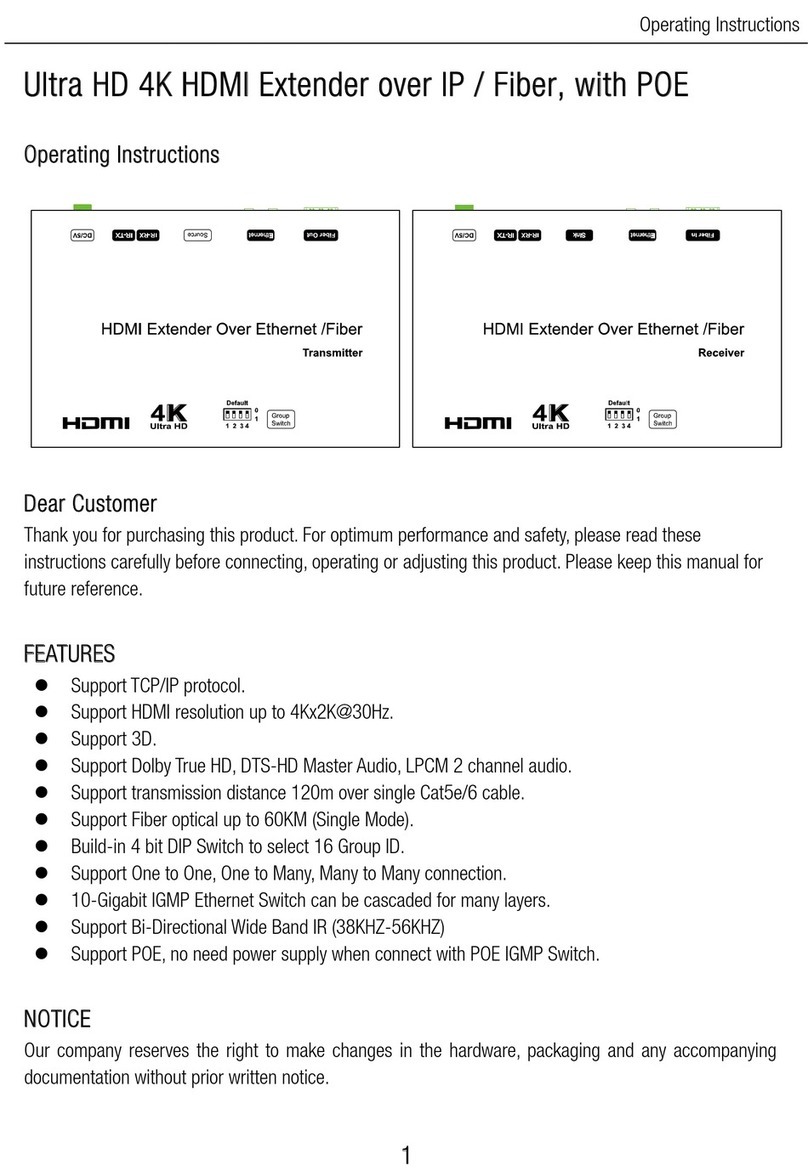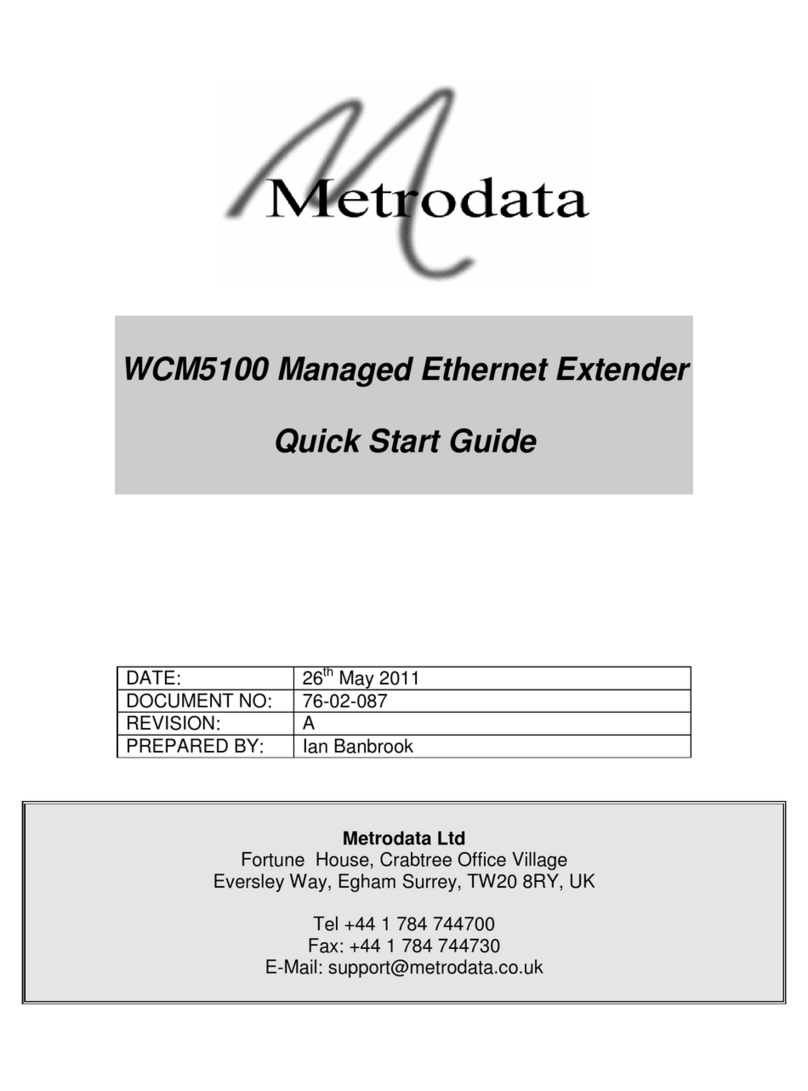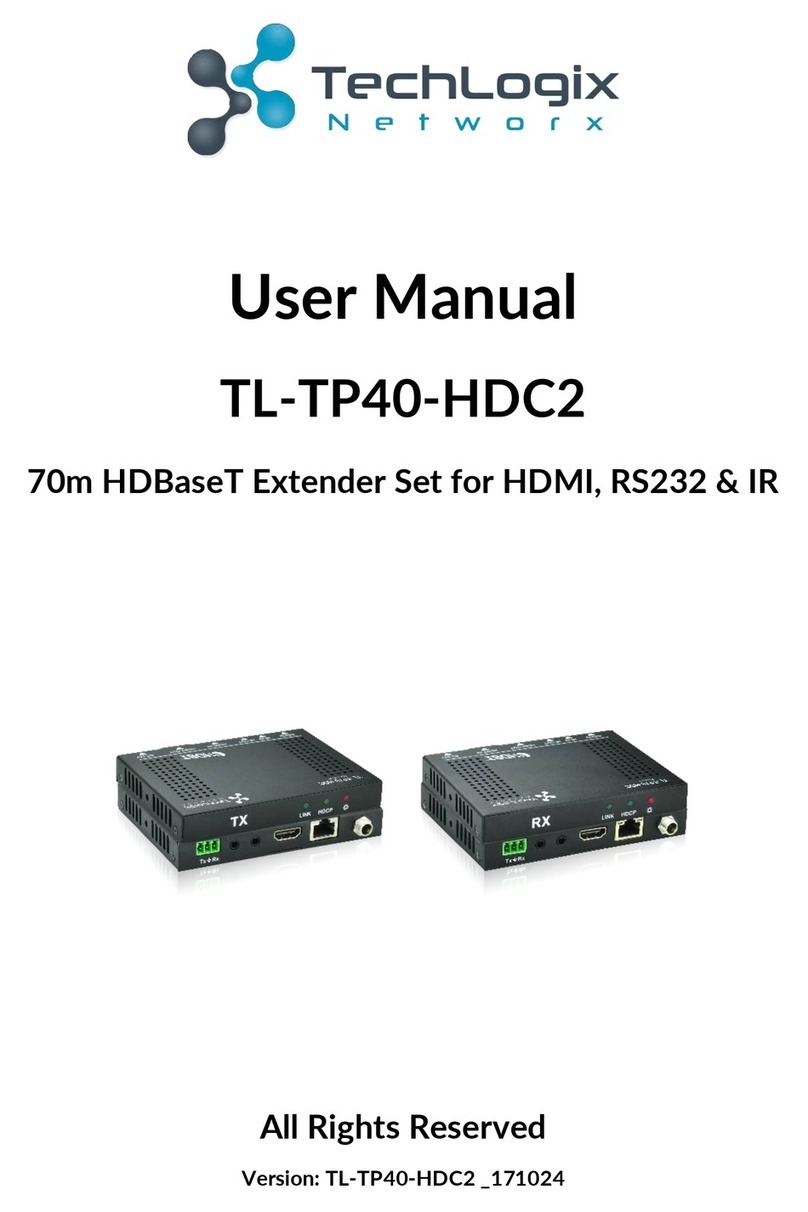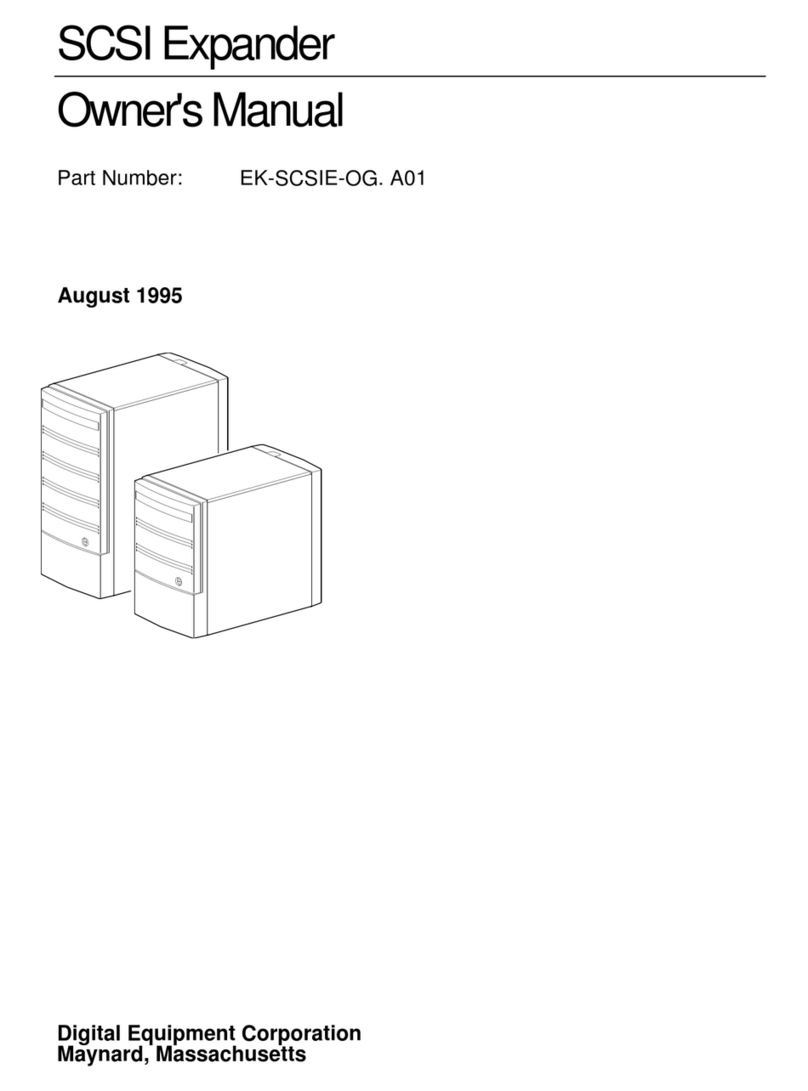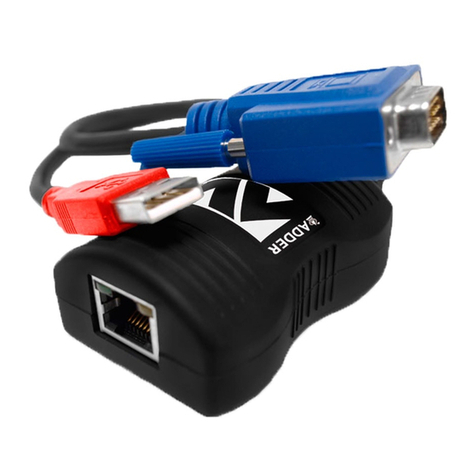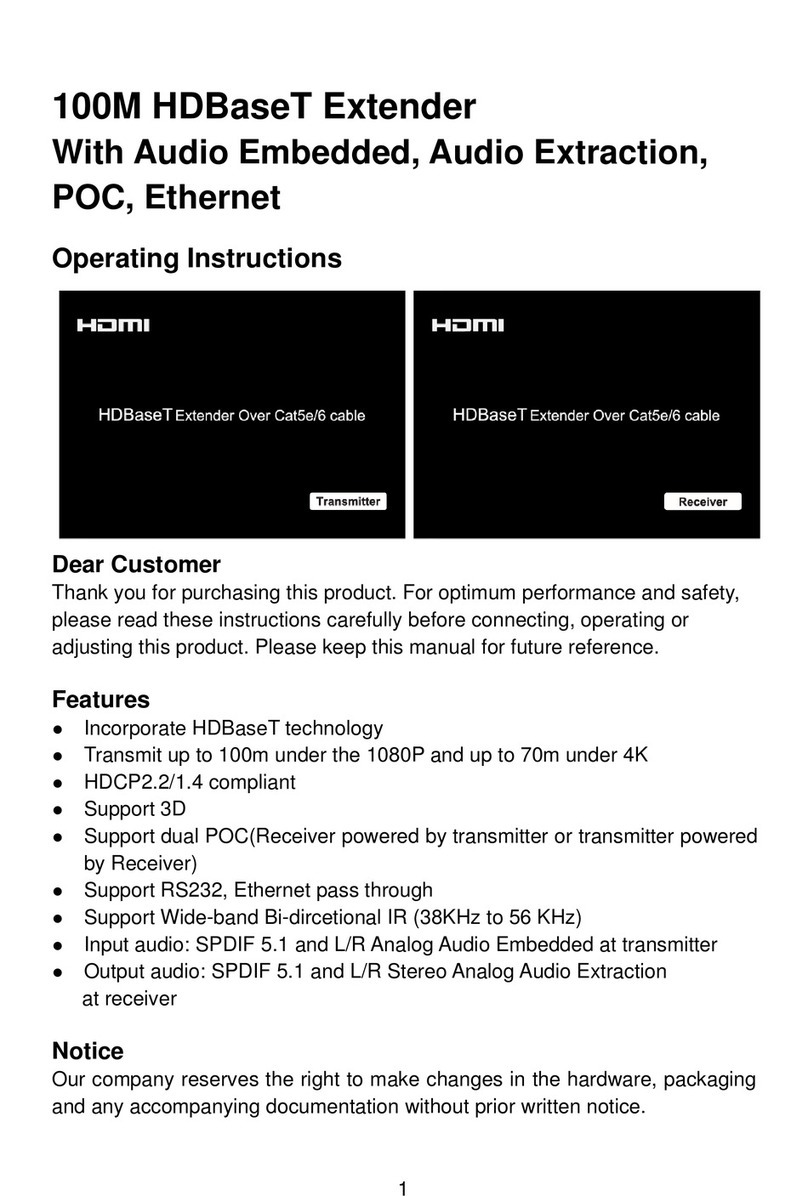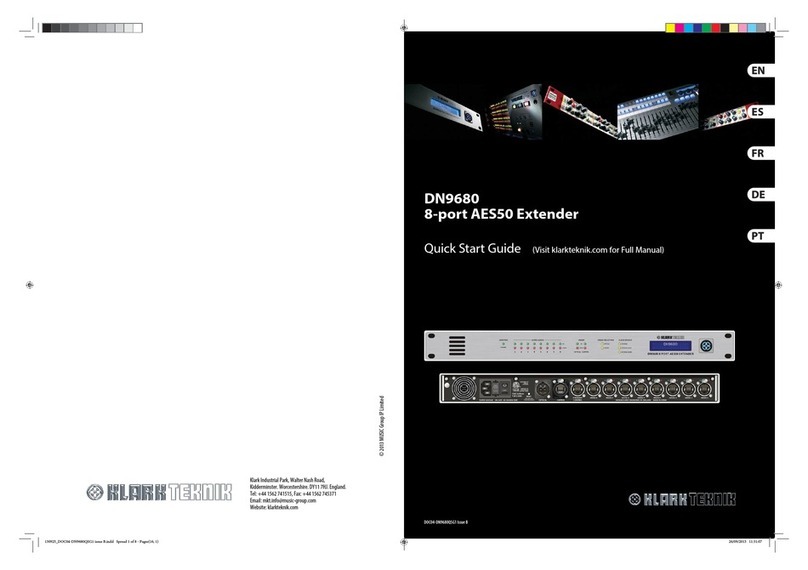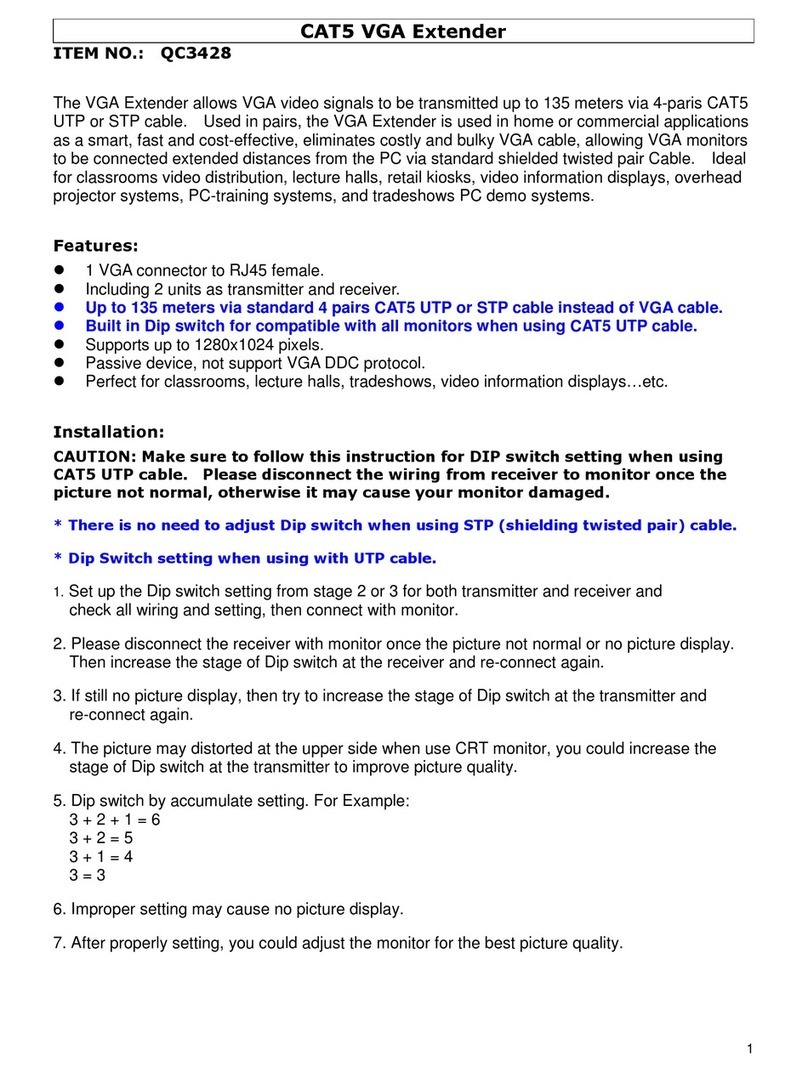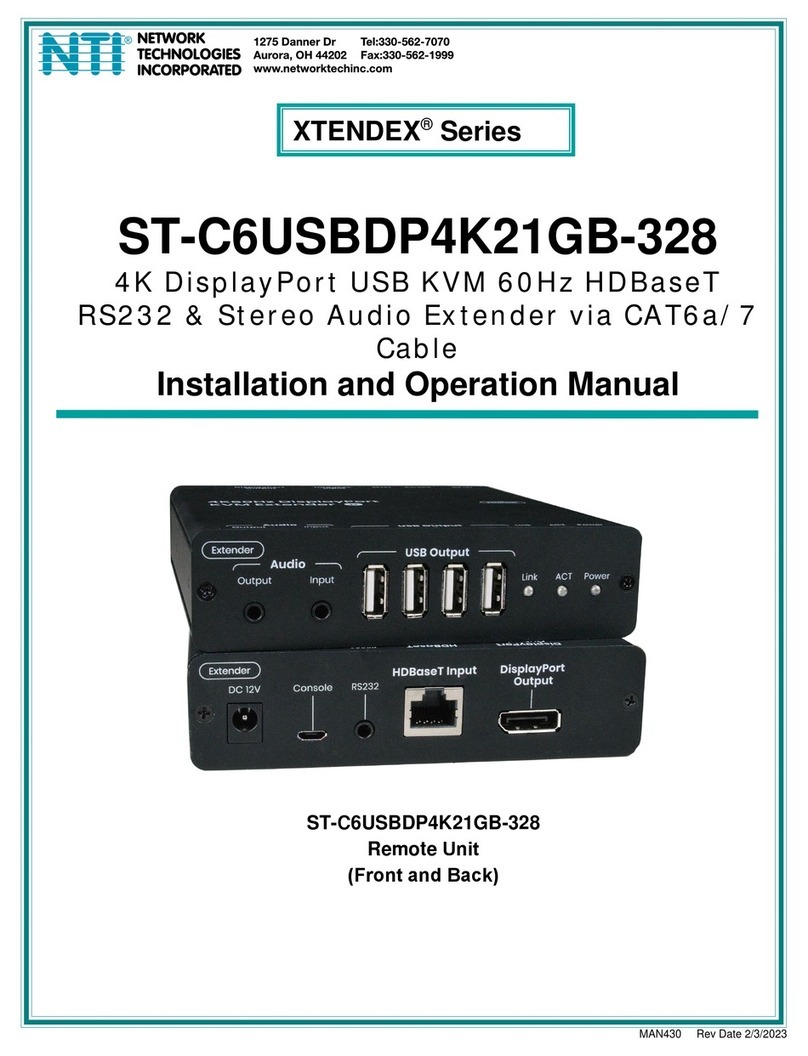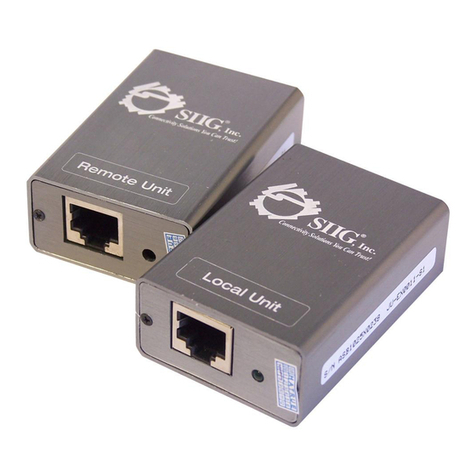Technicon LiftStand User manual

User manual
Lift Stand
Version EN 2018/09 (rev. 1.1))


Version EN 2018/09 (rev. 1.1) Lift Stand User manual
Foreword
LiftStand is a Plug and Play solution for UR5 and UR10 robots, which allows the robot to
control an extra degree of freedom by lifting the robot vertically.
The position is controlled through a user-friendly UR-certified Cap, which can be handled
with the same ease as other UR-programming. Thus, the position can be controlled by two
positions, either an equalizer preset height or via a variable.
The speed of the movement is set collectively for all motions in the same application.
The LiftStand has a stroke of 500 mm and a minimum height of 900 mm over mounting
surface.
Important Safety Information
Lift Stand is a partially completed machine and therefore requires an integrator, to complete
a final risk assessment for a final integrated machine. It is particularly important, that all
safety instructions from section 2 is respected.
Additional Information
Further information can be found on the website www.technicon.dk or by contacting:
Technicon ApS
Sjællandsvej 19
DK-9500 Hobro
CVR: DK33759894
Tel.: + 45 64645075
Email: kontakt@technicon.dk

User manual Lift Stand Version EN 2018/09 (rev. 1.1)
Contents
1 About the user's Guide ............................................................................................... 1
1.1 General ............................................................................................................... 1
1.2 Validity ................................................................................................................ 1
1.3 Product Warranty ................................................................................................ 2
1.4 Disclaimer ........................................................................................................... 2
2 General Safety Instructions ........................................................................................ 3
2.1 Generally ............................................................................................................ 3
2.2 Intended use ....................................................................................................... 3
2.3 Reasonably foreseeable misuse ......................................................................... 3
2.4 Lifetime ............................................................................................................... 3
2.5 Safety devices .................................................................................................... 4
2.6 Safety Signs ....................................................................................................... 4
2.7 Personal Protective Equipment ........................................................................... 4
2.8 Precautions ......................................................................................................... 4
2.8.1 Maintenance and Repair .............................................................................. 4
2.9 Other Dangers .................................................................................................... 5
2.10 Extension and Conversion .................................................................................. 5
2.11 Emergency measures ......................................................................................... 5
2.11.1 Firefighting ................................................................................................... 5
2.11.2 Possible emissions ...................................................................................... 6
2.11.3 First Aid measures ....................................................................................... 6
3 Technical Overview .................................................................................................... 7
3.1 Interface.............................................................................................................. 8
3.1.1 Supply- and communication interface .......................................................... 8
3.1.2 Mechanical interface .................................................................................... 9
4 Installation and Commissioning................................................................................ 10
4.1 Mounting ........................................................................................................... 10
4.2 Energy chain ..................................................................................................... 10
4.3 Mounting the robot ............................................................................................ 12
5 Operation – Software ............................................................................................... 13
5.1 Setup ................................................................................................................ 13

Version EN 2018/09 (rev. 1.1) Lift Stand User manual
5.1.1 Installing your Cap ..................................................................................... 13
5.1.2 Configuring UR Cap ................................................................................... 14
5.2 Use ................................................................................................................... 16
5.2.1 Control of the LiftStand at fixed values ....................................................... 17
5.2.2 Control of the LiftStand when using a variable ........................................... 18
6 Help in case of failure ............................................................................................... 20
6.1 In case of failure ................................................................................................ 20
7 Maintenance task for technical personnel ................................................................. 21
7.1 Security ............................................................................................................. 21
7.2 Corrective Maintenance .................................................................................... 21
7.3 Performing Maintenance Tasks ......................................................................... 22
7.4 Preventive Maintenance .................................................................................... 22
7.4.1 Lubrication ................................................................................................. 22
7.5 State-based Maintain ........................................................................................ 23
8 Transport and storage .............................................................................................. 24
8.1 Transport........................................................................................................... 24
8.1.1 Before transportation .................................................................................. 24
8.1.2 Transport of LiftStand ................................................................................. 24
8.1.3 Unpacking the LiftStand ............................................................................. 24
8.2 Storage ............................................................................................................. 25
8.2.1 Storage requirements ................................................................................. 25
8.2.2 Preparing the LiftStand .............................................................................. 25
9 Disassembly ............................................................................................................. 26
9.1 Generally........................................................................................................... 26
9.2 Disposal and Recycling ..................................................................................... 26
10 Technical data ...................................................................................................... 27
11 Spare parts List .................................................................................................... 29
12 Declaration of Incorporation .................................................................................. 30


Version EN 2018/09 (rev. 1.1) Lift Stand User manual
1
1 About the user's Guide
1.1 General
This user manual is Technicon ApS’s original user manual for Lift Stand.
These instructions are intended to facilitate the knowledge of LiftStand and how to
use the intended application features. The instructions must be read and be applied
by any person authorized with tasks involving the LiftStand. New maintenance
personnel must be trained by an experienced colleague before the maintenance work
is carried out. For the purpose of this user manual is to ensure the correct use and
maintenance of LiftStand.
The user manual contains important notes to operate the LiftStand safely and correct.
Compliance helps with:
Avoidance of hazards
Avoidance of repair costs and downtime
Increasing product reliability and lifetime
The instructions must be kept at a known place for the staff, where it is easy to access
for operators and maintenance personnel.
In addition, anyone who must operate, service, maintain or repair the LiftStand, is
obligation to seek information in the user manual.
In addition to these operating instructions, the accident prevention and environmental
protection provisions applicable in the respective country of use is to be complied
with.
1.2 Validity
The information does not cover the design, installation and operation of a whole
installation, nor any peripheral equipment where LiftStand is incorporated, that can
affect safety throughout the system. If this LiftStand is integrated into an installation,
the system installed in accordance with the safety requirements set out in standards
and regulations for the country where LiftStand install.
Integrator of LiftStand is responsible for ensuring, that the country's applicable safety
regulations and regulations are complied with, and that all significant hazards are
eliminated throughout the system.
This includes:
Development of a system-wide risk assessment.

User manual Lift Stand Version EN 2018/09 (rev. 1.1)
2
Interfaces to other machines and additional safety devices, if defined in the
risk assessment.
Ensure that the user does not modify any security measures.
Approval of the assembled system is properly designed and installed.
Instructions for the final installation.
Marking of the installation with relevant signs and contact information for the
integrator
Collection of all documentation for a technical dossier.
1.3 Product Warranty
Please refer to the contract for sales and delivery terms from Technicon ApS.
1.4 Disclaimer
Technicon ApS expects that the content of this manual is precise and accurate but
takes reservations for any errors or missing information.

Version EN 2018/09 (rev. 1.1) Lift Stand User manual
3
2 General Safety Instructions
Warning
Improper operation or maintenance can be dangerous and in the
worst
-case cause death!
2.1 Generally
Personnel operating LiftStand, shall not be affected in any form which adversely
affects their attention and/or reaction capacity negative.
2.2 Intended use
LiftStand is intended as a "Plug & Play" solution for Universal Robots’ UR5 and UR10,
which allows the robot to control an extra degree of freedom by lifting the robot
vertically.
2.3 Reasonably foreseeable misuse
All use and purpose different from the intended purpose are deemed to be improper
misuse. This includes, but is not limited to:
Use in potentially explosive environments
Use in corrosive environment
Use as a climbing frame
Operation outside the permissible operating parameters
2.4 Lifetime
Components should be inspected, maintained and replaced according to the
supplier's recommendations.

User manual Lift Stand Version EN 2018/09 (rev. 1.1)
4
2.5 Safety devices
There are no safety devices such as emergency stop on LiftStand
It is recommended to have a CO2 fire extinguisher (carbon dioxide extinguishes)
within a reasonable distance of LiftStand.
2.6 Safety Signs
To warn of the actual hazards, warning signs are located in areas where the danger
can occur.
2.7 Personal Protective Equipment
It is recommended that safety footwear is used during operation and transport.
2.8 Precautions
Warning
Never use LiftStand if it is damaged.
If a dangerous error occurs, the operation stop must be stopped
immediately. Write down the circumstances that led to the error
and contact Technicon ApS.
Do not connect safety equipment to normal I/O. Use only
security-related interfaces.
2.8.1 Maintenance and Repair
Warning
Risk of shock
There is a risk of shock if an accessory is connected directly to the
electric board.

Version EN 2018/09 (rev. 1.1) Lift Stand User manual
5
All sources of supply must be disconnected by such an
operation. The operation may only be performed by qualified
personnel.
Warning
Danger of being hit
There is a danger of being hit by LiftStand when running
automatically.
All personnel around LiftStand Should always show great
caution when approaching it.
2.9 Other Dangers
No other hazards have been found with the use of this machine than mentioned in
section 2.8 "Precautions".
2.10 Extension and Conversion
One of the most important tasks for an integrator is the risk assessment. The LiftStand
is a partly completed machine, as the safety LiftStand depends on how the LiftStand
is being integrated (for example, with tools, obstacles, and other machines).
It is advisable integrator to use the guidelines in ISO 12100 for the risk assessment.
2.11 Emergency measures
2.11.1 Firefighting
In the event of development of fire the nearest fire extinguishing device is used to
avoid the fire spreading.

User manual Lift Stand Version EN 2018/09 (rev. 1.1)
6
2.11.2 Possible emissions
In case of smoke from LiftStand the nearest fire extinguishing device must be ready
for use in case of fire. Adequate ventilation is required to remove the smoke from the
room.
2.11.3 First Aid measures
In case of personal injury, the damage must be stopped appropriately and the
LiftStand must be shut down from the control system or pulling the power plug.

Version EN 2018/09 (rev. 1.1) Lift Stand User manual
7
3 Technical Overview
Figure 3.1 shows a summary picture of LiftStand with numbered arrows. These are
explained in terms of Table 3.1.
Figure 3.1 Summary picture with numbered arrows.

User manual Lift Stand Version EN 2018/09 (rev. 1.1)
8
No. Term
1 Robot flange for mounting your robot
2 Pillar
3 Top plate on pillar
4 Energy chain
5 Control cabinet
6 Interface for Control cabinet
7 Cable channel with mounted Energy
chain
8 Top panel for Cable channel
Table 3.1 Naming convention
3.1 Interface
3.1.1 Supply- and communication interface
On the LiftStand there is mounted a 230 V Power Supply outlet (2) and a RJ45
Ethernet outlet (1), there must be used to supply your robot's controller with power
and communication. The LiftStand shall be supplied with 230 V from the fitted cable
with end plug (3) designed according to SB 107-2-D1. Above the power supply cable
is there a disposable outlet (4). From the right (5) is there a feedthrough hole for a
robot cable. This is done by removing the two cover plates.
Figure 3.2 Supply interface on the back of LiftStand
No. Term
1 RJ45 Communication
2 230 V Outlet
3 Power supply cable with plug

Version EN 2018/09 (rev. 1.1) Lift Stand User manual
9
No. Term
4 Available outlet Ø22 mm
5 Robot cable feedthrough hole
Ø12,5 mm
Table 3.2 Naming convention
3.1.2 Mechanical interface
At the top of the column is a UR robot flange on which a UR5 or a UR10 can be
mounted, see 1 on Figure 3.1.
Figure 3.3 Robot Flange

User manual Lift Stand Version EN 2018/09 (rev. 1.1)
10
4 Installation and Commissioning
4.1 Mounting
Mounting of the LiftStand is done by 4 M12 bolts. These must be tightened with least
86.8 Nm. The floor must be flat and must not be inclined > 3°.
Danger of injury
Please note that the ground surface must withstand the required
torque. It is the user's responsibility to ensure safe surfaces.
On Figure 4.1 The dimensions of the base plate for LiftStand, with the 4 installation
holes are shown.
Figure 4.1 Dimension sketch og LiftStand. LiftStand seen from above
4.2 Energy chain
To connect the robot with the controller, use the feedthrough hole on the back of the
cabinet, see Figure 3.2, where the cable is carried through the energy chain. Remove
the top plate on the energy chain holder, see Figure 4.2, where afterward cables can
be guided through the chain holder and click into the energy chain. Adjust the length

Version EN 2018/09 (rev. 1.1) Lift Stand User manual
11
of the cables so they reach their destination sufficient, and finally the top plate is
mounted again.
Figure 4.2 Installation of the energy chain.
Figure 4.3 Energy chain cross-section.
Type Value
Ba 25 mm
Bi 37 mm

User manual Lift Stand Version EN 2018/09 (rev. 1.1)
12
Type Value
Bending
radius
28 mm
Max Cable
diameter
Ø13
Table 4.1 Energy Chain Data
For 3D virtual illustration, scan this QR code with a phone/tablet with access to the
internet. You will be prompted to download the Augment app. Once done, scan the
QR code again and a 3D version will appear on your device.
The Red tube In the model illustrates the wiring.
4.3 Mounting the robot
The robot is mounted on the robot flange as instructed in the robot's manual. Install
the robot cable and connect LiftStand and UR controller with an Ethernet cable, see
arrow 1 on Figure 3.2.
Thus, the LiftStand is installed and ready for operation. The next step is the installation
and setup of the LiftStand URCap.

Version EN 2018/09 (rev. 1.1) Lift Stand User manual
13
5 Operation – Software
5.1 Setup
This chapter will guide the user through all the necessary steps to be able to set up
the corresponding UR Cap. The setup includes installation of Cap, connection
between the robot and the LiftStand and maximum motion speed setting. When the
setup is complete, the user can use the LiftStand through the corresponding program
node.
5.1.1 Installing your Cap
First step is to install the UR Cap. This is done from the robot’s setup screen, which
is seen on Figure 5.1.
Figure 5.1 Polyscope robot setup screen
The text below the tool icon describes the Polyscope version installed in the robot.
Check that the version is at least 3.5.0. If the version is older, update the robot1.
1 Consult the robot’s user manual.

User manual Lift Stand Version EN 2018/09 (rev. 1.1)
14
Press the "URCaps" button to continue. If the "Active URCaps" list contains "
LiftStand" the Cap is already installed. In this case, proceed to the section 5.1.2
Configuring UR Cap.
Press the "+" button, insert a USB memory card with UR Cap and select the
installation file "LiftStand-x.x.urcap". Press "Open" and the screen will display the Cap
in the list "Active URCaps". This is seen in Figure 5.2.
Figure 5.2 Program window for the installation of UR Cap
To complete the installation Press "restart". Once UR Cap is successfully installed it
must be configured.
5.1.2 Configuring UR Cap
Before the LiftStand’s UR Cap can be used in a program, it must be configured. From
the Polyscope boot screen navigate to setup screen seen on Figure 5.3.
Program Robot→Installation→LiftStand→Setup
Table of contents
Popular Extender manuals by other brands

ATEN
ATEN UCE3250 user manual

TP-Link
TP-Link RE365 Quick installation guide
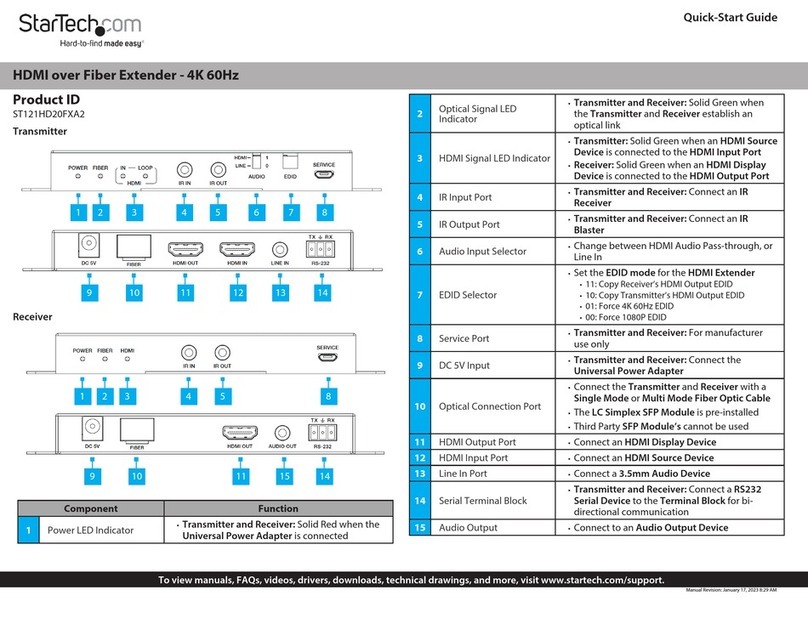
StarTech.com
StarTech.com ST121HD20FXA2 quick start guide
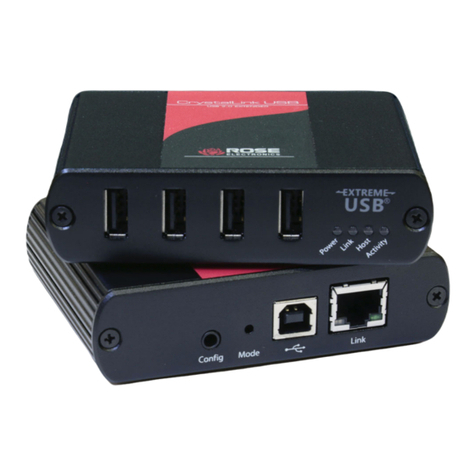
Rose electronics
Rose electronics CrystalLink USB2.0 CATx Installation and operation manual
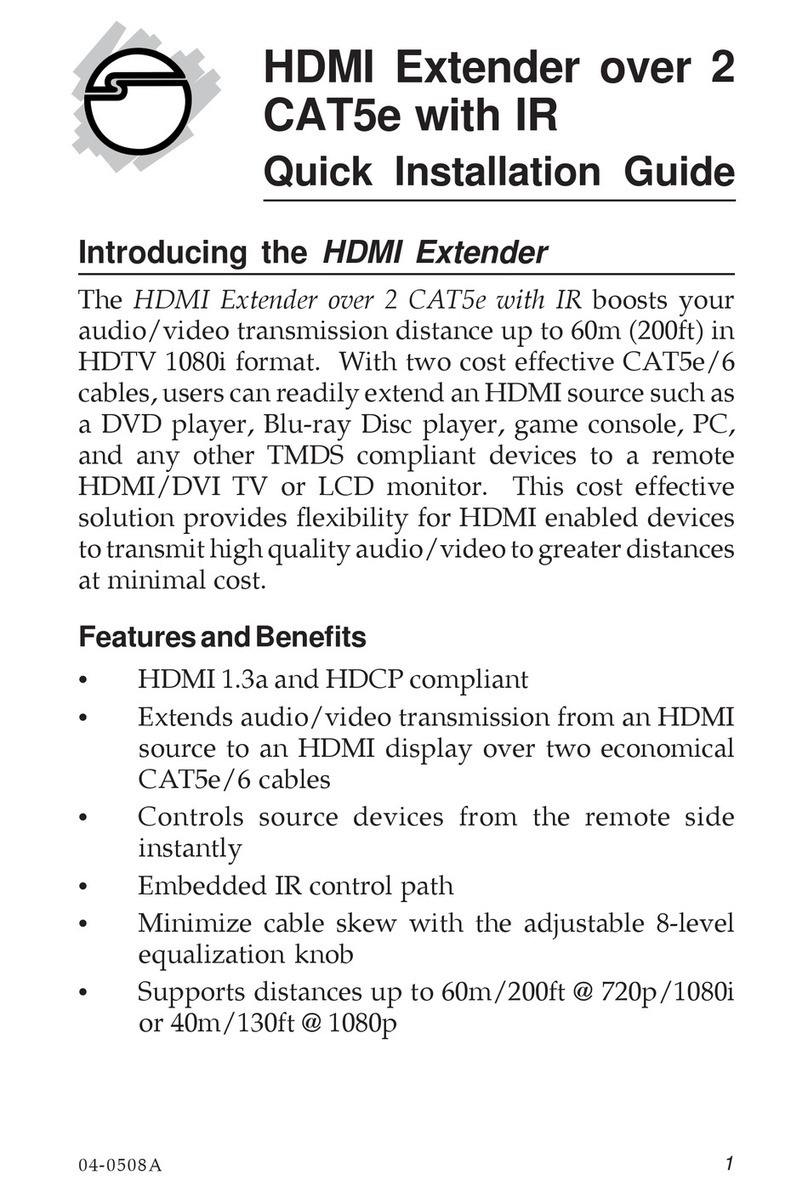
SIIG
SIIG CE-HM0051-S1 Quick installation guide

Huaptec
Huaptec HiBoost Hi10-3S-Pro user manual
